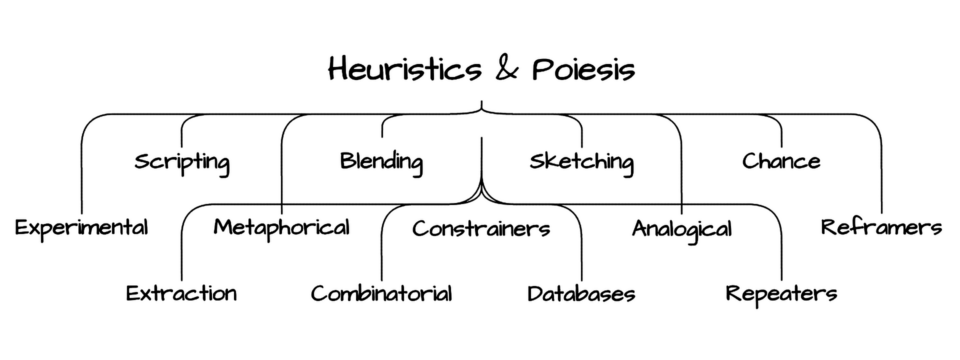Exploring Modes of Human-Machine Co-Authorship
Commissioned artwork, TANK Shanghai (CN)
Wall print, 4×4 meters
2023
Wall print, 4×4 meters
2023
“I am not sure that I exist, actually. I am all the writers that I have read, all the people that I have met, all the women that I have loved; all the cities that I have visited.”
— Jorge Luis Borges (1981)
It has already been demonstrated that AI systems possess a remarkable capacity to discover new patterns and relationships within complex tasks more effectively than humans. Given access to a large dataset, an AI system can scan an entire combinatorial field and return results that may be considered novel or even ingenious. In identifying latent structures and statistical regularities, artificial intelligence excels. However, when required to move beyond the dataset – to extrapolate, imagine, or deviate from known inputs – its performance often falters. This extrapolative ability is central to what might be considered creative intelligence.
This project explores the limits of creativity through a hybrid collective of human and computational agents. Together, they are tasked with generating thousands of original definitions of “creativity”, distinguishing, comparing, and co-authoring the concepts of “human creativity” and “machine creativity”. The challenge parallels what J.P. Guilford proposed in the Alternative Uses Test (1967), where divergent thinking is seen as a key indicator of creative potential. In our case, generative constraints are clearly defined:
This rigorous constraint-based system reveals both the productive limits and emergent possibilities of a co-creative framework. While the AI offers scale and pattern recognition, it is the human capacity for semantic drift and contextual extrapolation that enriches the generative process.

The theoretical foundations of this installation are grounded in the critical inquiries of Michel Foucault, Italo Calvino, Roland Barthes, and Jacques Derrida. Foucault, in his seminal essay What is an Author? (1969), destabilizes the notion of the author as an origin, framing authorship as a discursive function shaped by institutional and social contexts. Barthes, in The Pleasure of the Text (1973), elevates the role of the reader as a co-producer of meaning, an idea that resonates powerfully in our dialogic human-machine model. Derrida’s theory of différance (1972) further challenges the stability of meaning, suggesting that interpretation is a perpetual deferral shaped by relational play. Within this intellectual lineage, our work operates not as a product with a single voice, but as a field of co-authorship, distributed across syntax, code, and interpretation.
The audience is tasked with perceiving the juxtapositions and parallels within the “human creativity” / “machine creativity” dichotomy. Amidst this ceaseless flow of definitions, the distinction between human and machine creativity becomes intriguingly porous, often merging in a provocative overlap that suggests a previously unseen connection. This engagement encourages an exploration of the fluid and often blurred boundaries of creativity, ultimately questioning the binary oppositions that are often taken for granted, and offering an exploration into the converging realm of human and machine co-authoring.
The final output is displayed on a large 4x4m print.
The work has been exhibited in Synthetic Cities.
Creation & Production: Stavros Didakis
Media Design Assistance: Yanrui Shao、Guoxi Yang、Vicky Chen
Production Coordinator: Huijun Guan
LED Equipment: Leyard | Linso LED
Co-Funded: West Bund Group